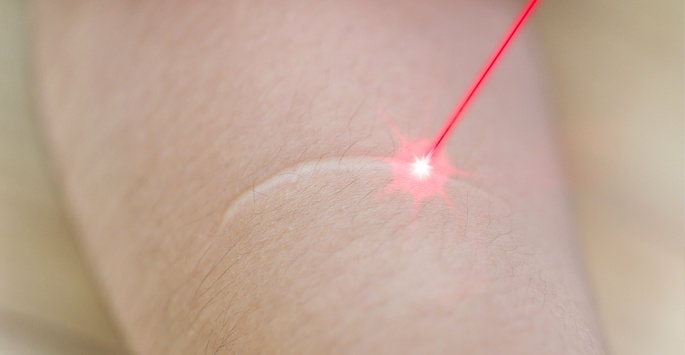
Scars. They are a fact of life. Everyone ends up with them one way or another, and unfortunately there is little we can do to avoid them. However, advancements have been made in the ways in which we can reduce or eliminate them, and many require little to no downtime to treat.
First, it’s important to understand what a scar is. A scar is made up of the same collagen proteins found in healthy skin cells, however, it is not quite the same as the rest of your skin. While normal healthy skin cells weave a random pattern of collagen fibers, scars create a distinct alignment in one direction, leaving a noticeable patch of repaired skin. The fibrous tissue of a scar is typically inferior to undamaged skin, lacking resistance to ultraviolet radiation, and scars also prevent sweat glands and hair follicles from reforming when the skin has healed. So how can we reduce or eliminate them?
CO2 Laser Resurfacing
CO2 Laser Resurfacing involves the use of a carbon dioxide laser to deliver ultrapulses of light to multiple layers of the skin, stimulating new, healthy cell growth. Regarded as one of the more aggressive therapies in scar removal, the results are dramatic. The procedure requires local anethesthetic and approximately one week of downtime. Applying sunscreen and avoiding UV radiation following this procedure is a must in order to allow your skin to properly heal.
Chemical Peels
A medical grade peel is a chemical solution that is applied to the skin and then allowed to absorb. Once absorbed, the peel is removed and the skin will begin to flake and peel. This process normally takes a couple of days to two weeks in most cases. There are three basic types of peels, depending on the severity of your scarring: superficial, medium, and deep. Deep chemical peels are limited to facial use only, and contain phenol, which tends to bleach the skin, so this solution may not be ideal for darker complexions.
Microneedling
Microneedling can help treat the appearance of acne scars through use of the Eclipse MicroPen®, a device that creates controlled micro-injuries to the skin in order to produce collagen and elastin. A microneedling facial can also have a positive effect on the appearance of hyper-pigmentation, hypo-pigmentation, traumatic scars, and stretch marks to create fresher appearance. While some patients begin to enjoy some level of results after one treatment, microneedling typically delivers its best results through a series of sessions.
Fraxel
Fraxel is a patented fractional technology which targets damaged skin with microscopic laser columns that penetrate deep into the skin, where it erases minor imperfections such as scars (and it may get rid of your fine lines, wrinkles, and age spots in the process!). While doing so, it stimulates your body’s own natural healing process to produce higher levels of collagen. Old and damaged cells are replaced, which results in tighter, healthier skin. The laser treats only a fraction of tissue at a time, leaving the surrounding tissue untouched, which promotes rapid healing. Numbing cream is typically offered for patients, and similar to CO2 laser resurfacing, special care must be taken of skin for a week or two following the procedure to ensure proper healing.
Dermabrasion
Diamond tip dermabrasion is a non-surgical skin resurfacing procedure using sterile diamond heads to peel and rub off dead cells at the top skin layer. This procedure will help reduce more than just superficial scarring. Skin debris, blemishes, wrinkles and uneven pigmentation of the skin will also be reduced. This facial includes light steam to soften the pores, thorough extractions, and a rejuvenating masque to aid in the healing process.
Fillers
Fillers as scar reduction are intended for rolling, ice pick, and box scars (scar types that cause an indentation in the skin as opposed to raised scars). Most fillers use either hyaluronic acid or collagen to immediately lift depressed scars to the level of the surrounding skin. The results can last anywhere from six months to five years, depending on the type and brand of filler used. Fillers are effective but temporary, and therefore regarded as a more cost effective method.
Kenalog Injections
Kenalog can be beneficial specifically for hypertrophic and keloid scars. Kenalog, which is often used to fend off an acne breakout, diminishes the bump created by the scar and simultaneously reduces the redness.
Talk to us
Suffering with scars? Contact us today for a free consultation
and see if any of our scar removal solutions are right for you.

